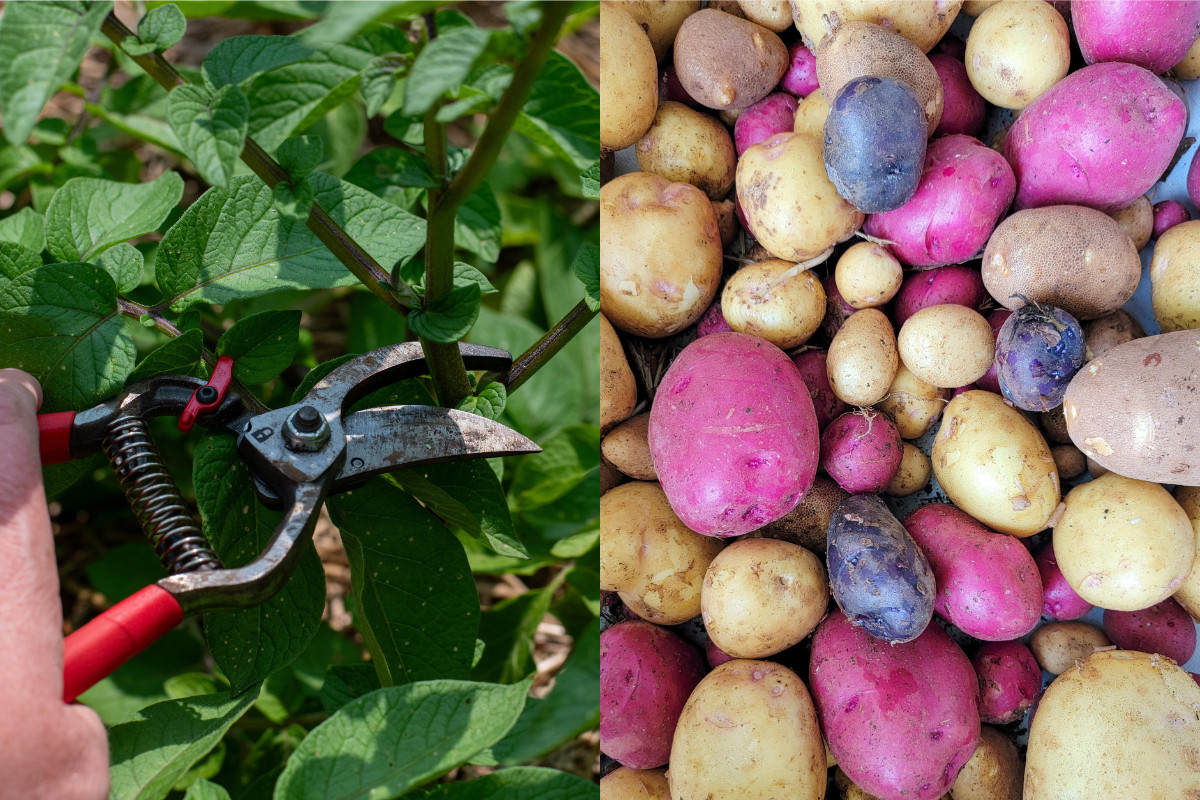
You need to prune your potatoes. Maybe. Possibly. It depends on the weather. Generally, potatoes are one of the few plants you can leave unattended in the garden. Rarely do they need pruning; in fact, it’s better if you don’t prune them. Hill them up more instead if they get too bushy.
However, as we approach the time of harvesting our buried treasure, there is a scenario in which you should prune potato plants. Intrigued? I thought so.
A Good Ol’ Fashioned Treasure Hunt
Potatoes have to be the most fun vegetable to harvest. Digging up each hill is as close to digging for buried treasure as most of us will ever get, especially if you grow Yukon gold potatoes.
Admittedly, they’re kind of boring to grow. They don’t require a ton of work. You bury them, bury them again once the plants get tall, maybe fertilize them and maybe hill them up once again over the growing season. Or you can make growing them even easier by growing no-dig mulch potatoes like we do. Heck, you can even grow them in a 5-gallon bucket.
Beyond that, they don’t require staking, fancy pruning, or a fertilizer schedule. You don’t have to thin them or deadhead anything to keep them going.
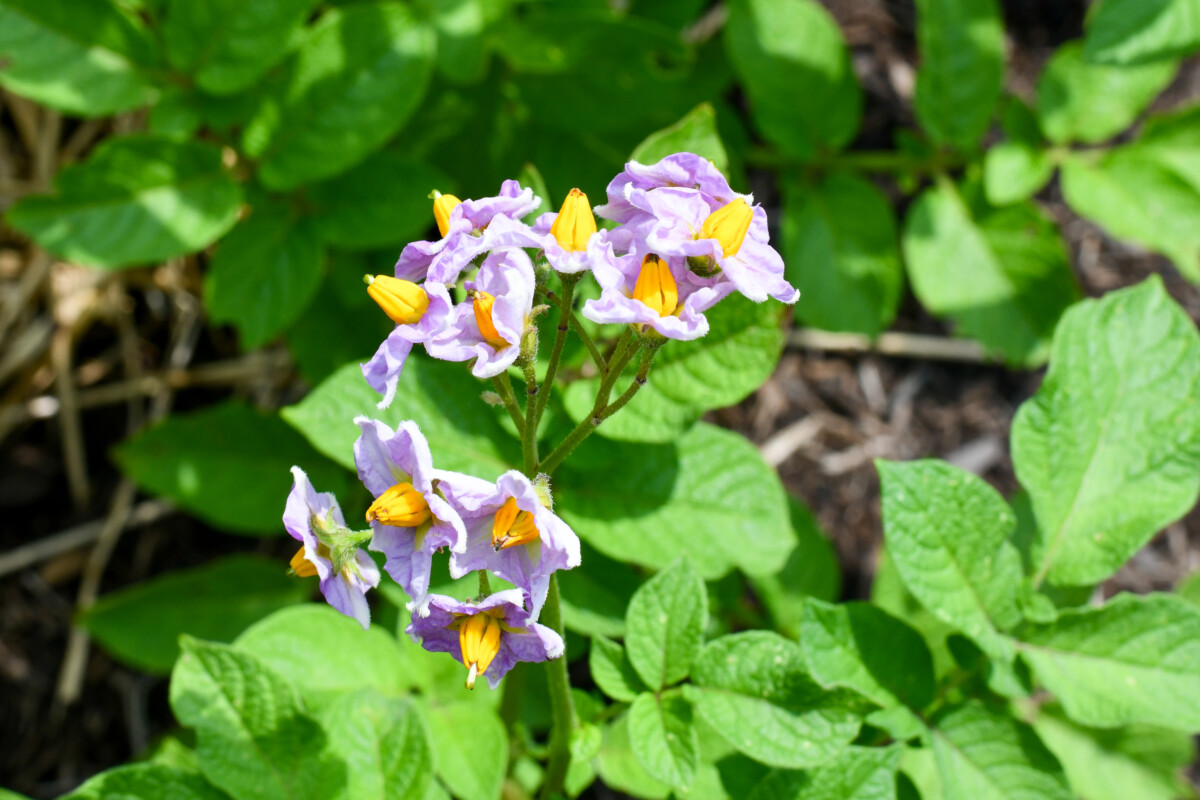
If you want, you can pinch off the flowers for bigger spuds, but it’s not necessary.
Unless you get hit by Colorado potato beetles, they’re about as close as you can get to a set-it-and-forget-it crop.
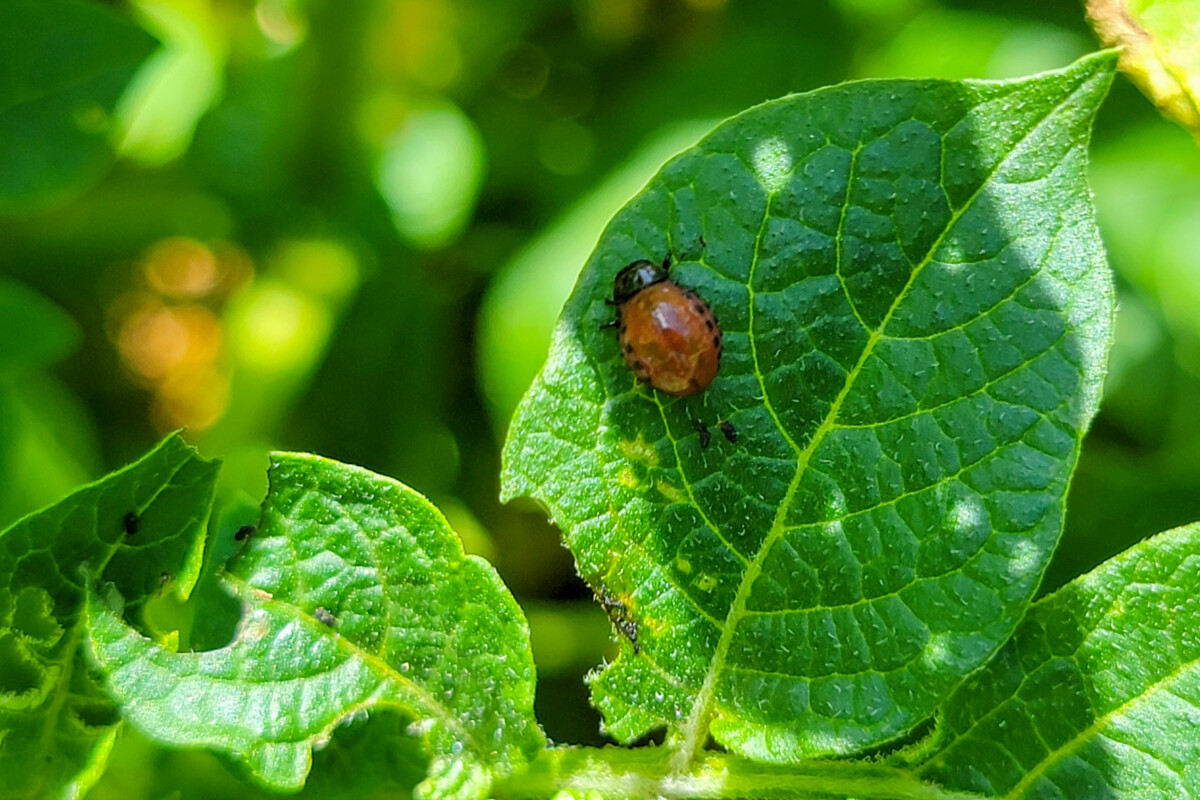
And harvesting them is quite literally digging for buried treasure. Unlike tomatoes or Brussels sprouts, which you can see developing over the season, you don’t know what you’ll find with potatoes until it’s time to dig them up.
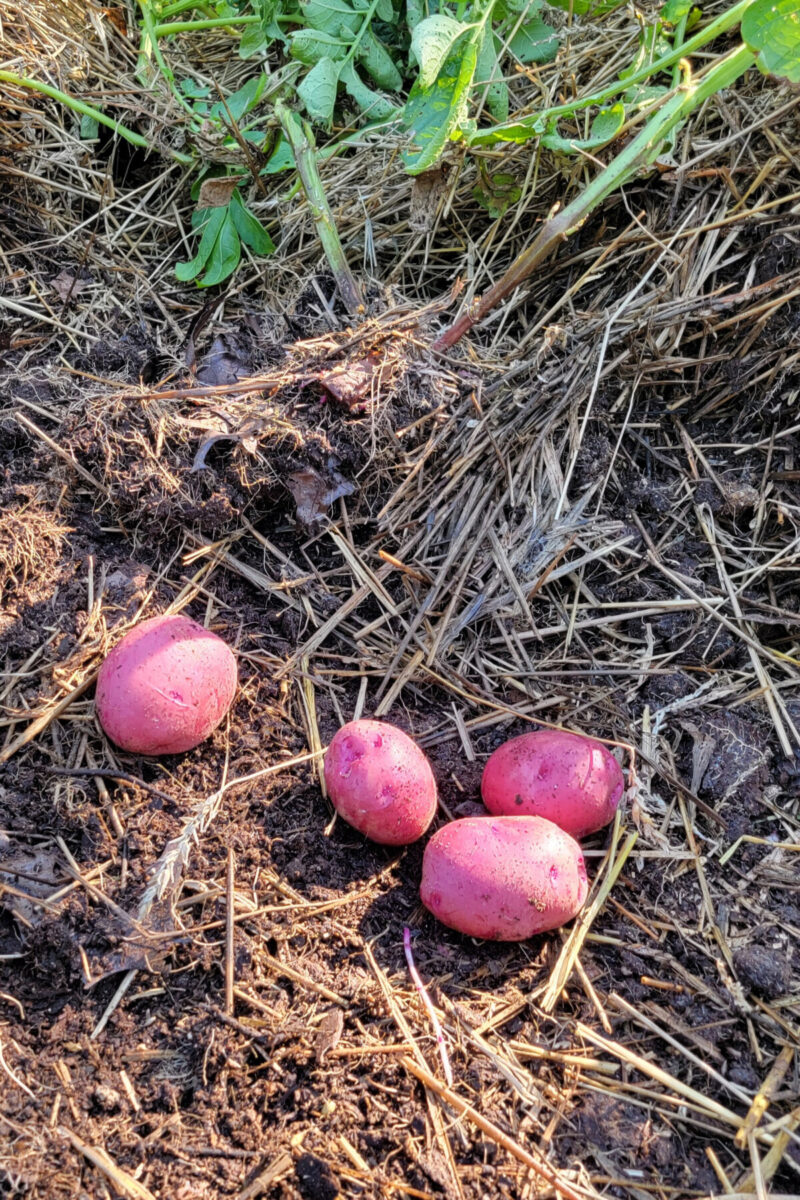
While it’s fun seeing what each hill of potatoes yields, it can be a little frustrating if you plan to dine on potatoes all winter long and end up with a small yield or thin-skinned potatoes that won’t last long. But that’s where pruning comes in.
But pruning potato plants at the end of the season directly affects how long you can store them and even when you can harvest them.
Storing Potatoes Long Term
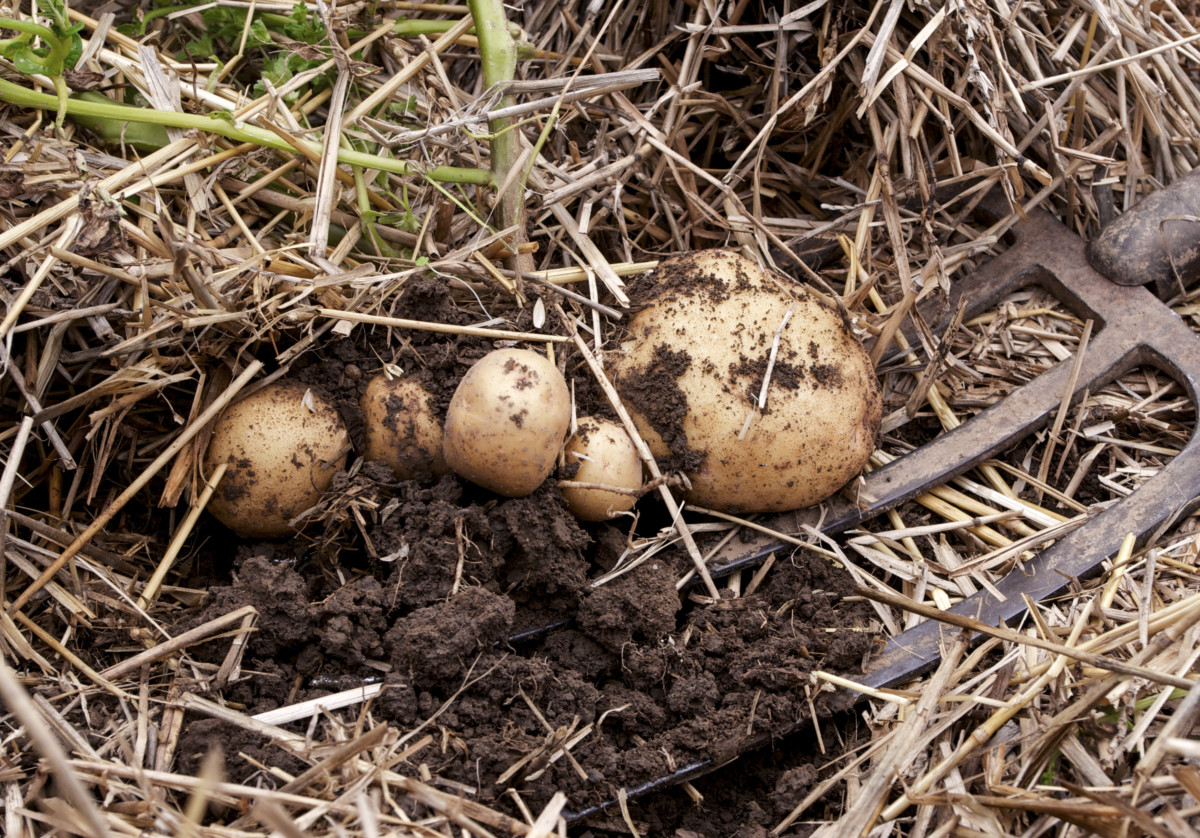
Now, I won’t get into the details of curing here, but if you want potatoes to last through the winter, they need to be cured after you’ve dug them up. Lydia covers the curing process in more depth here.
However, the curing process should start before you dig up your potatoes for the best results.
That’s because, at a certain point, the potato will stop growing, and the skin will grow thicker. This is what you want for good, long-term potato storage without them shrinking or shriveling – tough, thick skin.
We’re going to look at how you can take control of that process and why you would want to. But first, it’s important to understand a bit more about that tasty spud we’re growing beneath the soil and its skin.
Potatoes Aren’t Roots
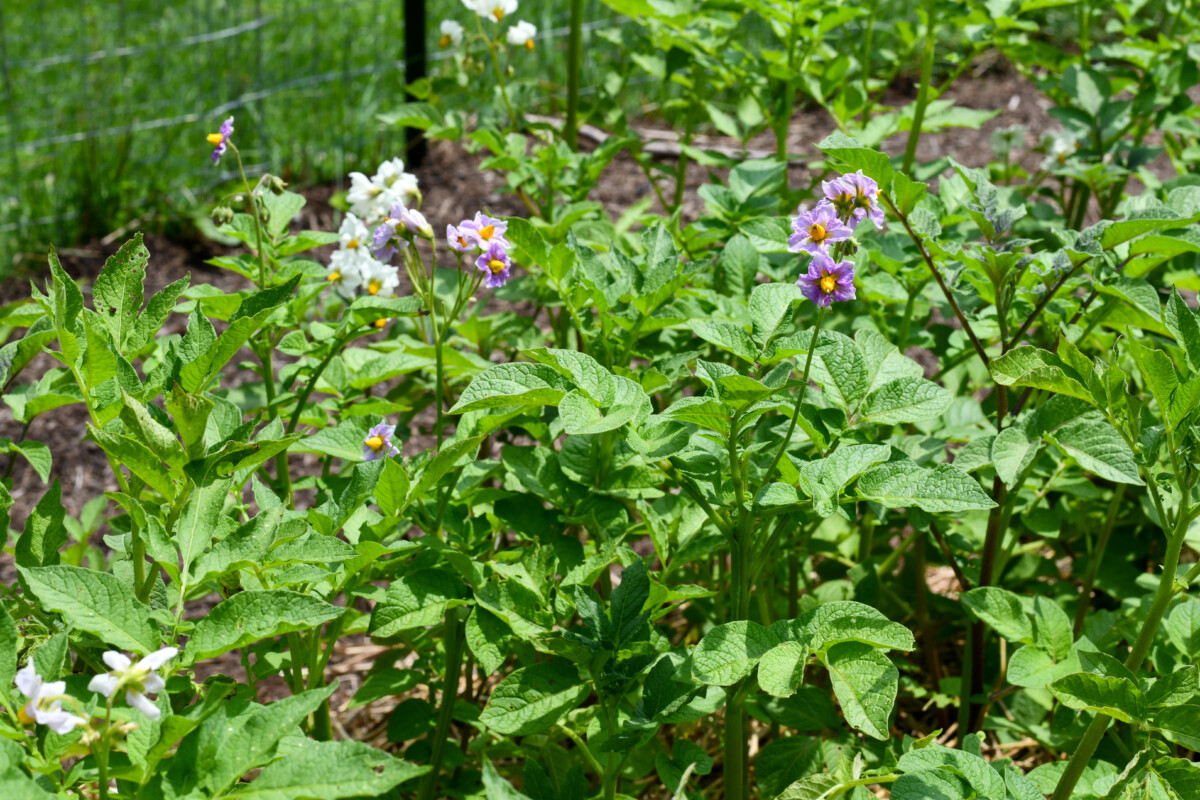
We often make the mistake of calling potatoes roots or referring to them as root crops. However, the tubers that grow below the ground are actually stems growing from the main branch of the plant rather than roots.
With that in mind, it makes more sense to think of potato skin in terms of the bark of a tree. Tree bark is there to keep moisture in the plant and lock out diseases and pests. As the stem ages, the bark becomes thicker. The same applies to the skin of a potato. However, with a potato, the skin only becomes bark-like once the plant begins to die back. Until that point, the skin stays very thin, to the point where it can easily slip off the potato.
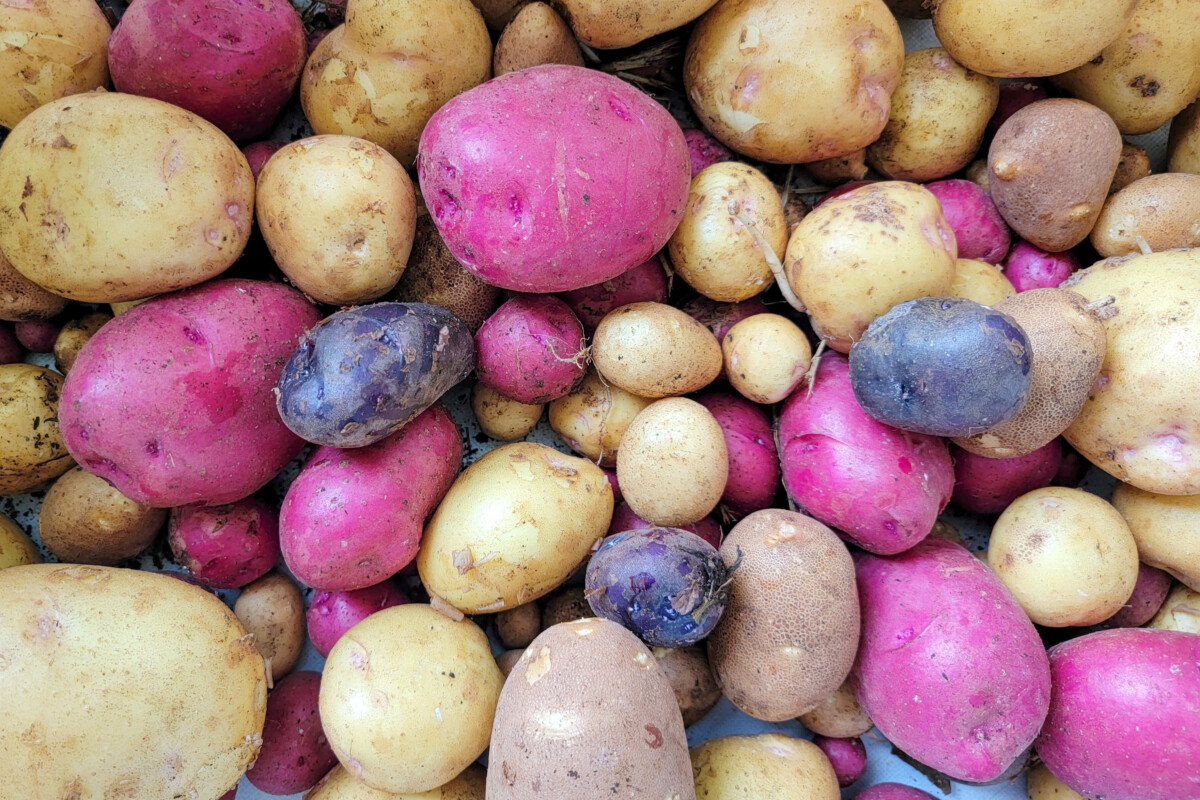
This is one of the things we enjoy about new potatoes – those lovely thin skins that slip right off once boiled.
This slippage is a natural design. The skin doesn’t fully adhere to the potato beneath, allowing the spud to grow larger throughout the season. Only when the potato plant dies off does the skin start to undergo the adhering and thickening process. This is why we leave potatoes in the ground for another two weeks after the plant has died. We’re allowing the skin to adhere to the potato and become hard and tough to protect it better.
Obviously, this process happens all on its own at the end of each growing season without pruning your potatoes.
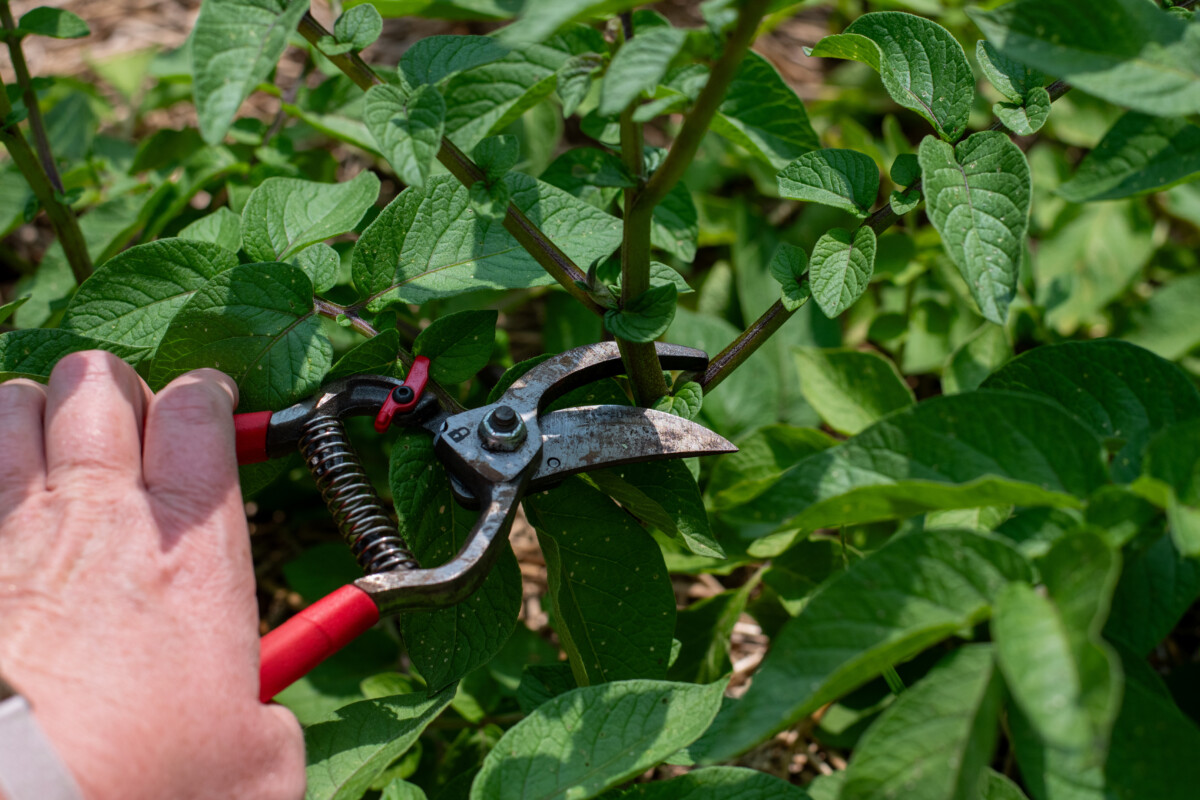
However, there are some good reasons for pruning potatoes and kickstarting the skin-thickening process yourself.
Growing conditions play an important role in the development of thick skin. Ideally, when the plant dies back and the skin starts developing, you want warm temperatures and dry to slightly moist soil for the best results. This will yield potatoes much less likely to lose water in storage and grow wrinkly and small.
Unfortunately, for many of us, when our potato plants finally die off on their own, and we can set the timer on that two-week skin-thickening period, we’re well into fall.
That means cold and rainy autumn weather for many, leaving us with less than ideal soil conditions for skin-thickening. Worse, if you get an especially rainy fall, and you’re waiting for your plants to die back or those two weeks before you dig up your potatoes, you open your crop up to scab or rot.
Take Control of Your Harvest
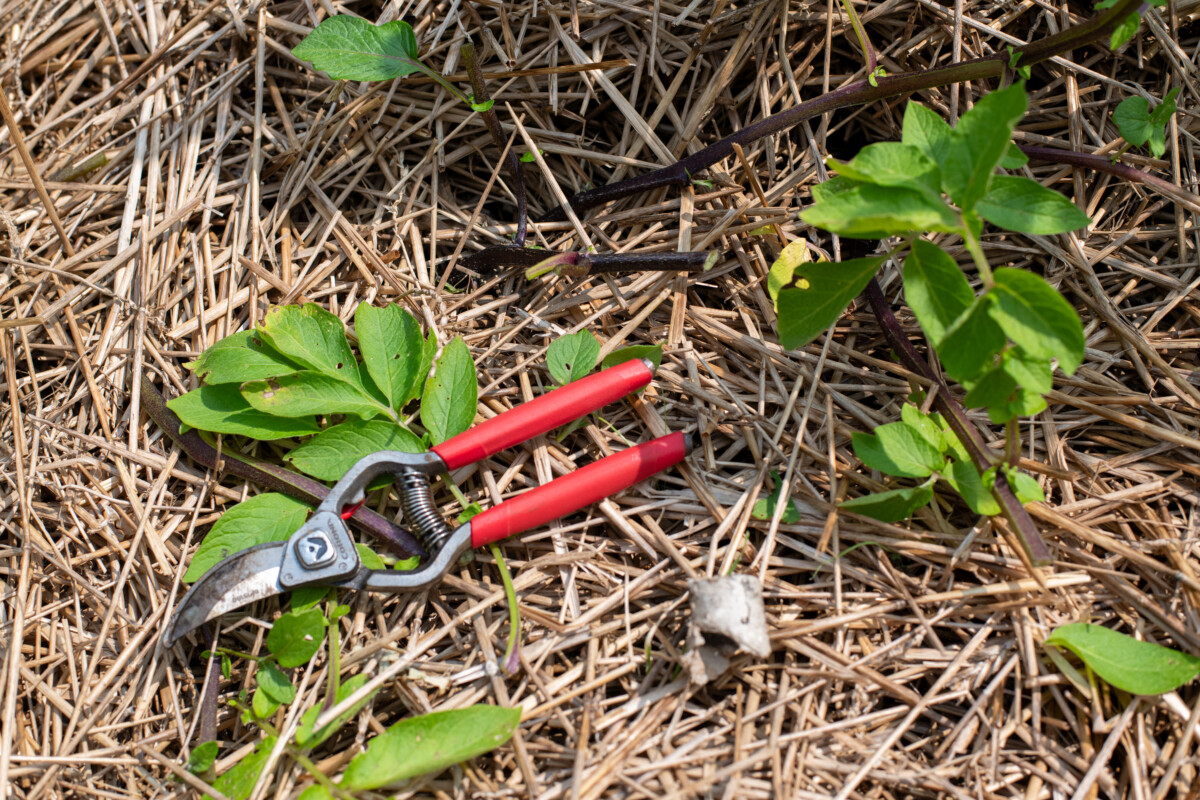
This is where pruning your potatoes comes in. Rather than waiting for mother nature to decide when it’s time for your potato plants to die back, you prune them back hard, essentially killing the vine. This is standard practice in nearly all commercial potato farms, allowing them to plan when their crops are ready to harvest and bring to market. They can balance skin-thickening with the weather in their climate.
So can you.
About two weeks before you wish to dig up your potatoes, cut the potato plants back, removing all the leaves. Cutting them back to within six inches above ground should do the trick. This triggers the potatoes to stop growing and start toughening those skins.
Now all you have to do is wait two weeks (you could even wait longer for some varieties if you’ve got nice weather) before digging them up and curing them as usual.
The nice part about this method is you can keep it in your back pocket as you head into the end of the season.
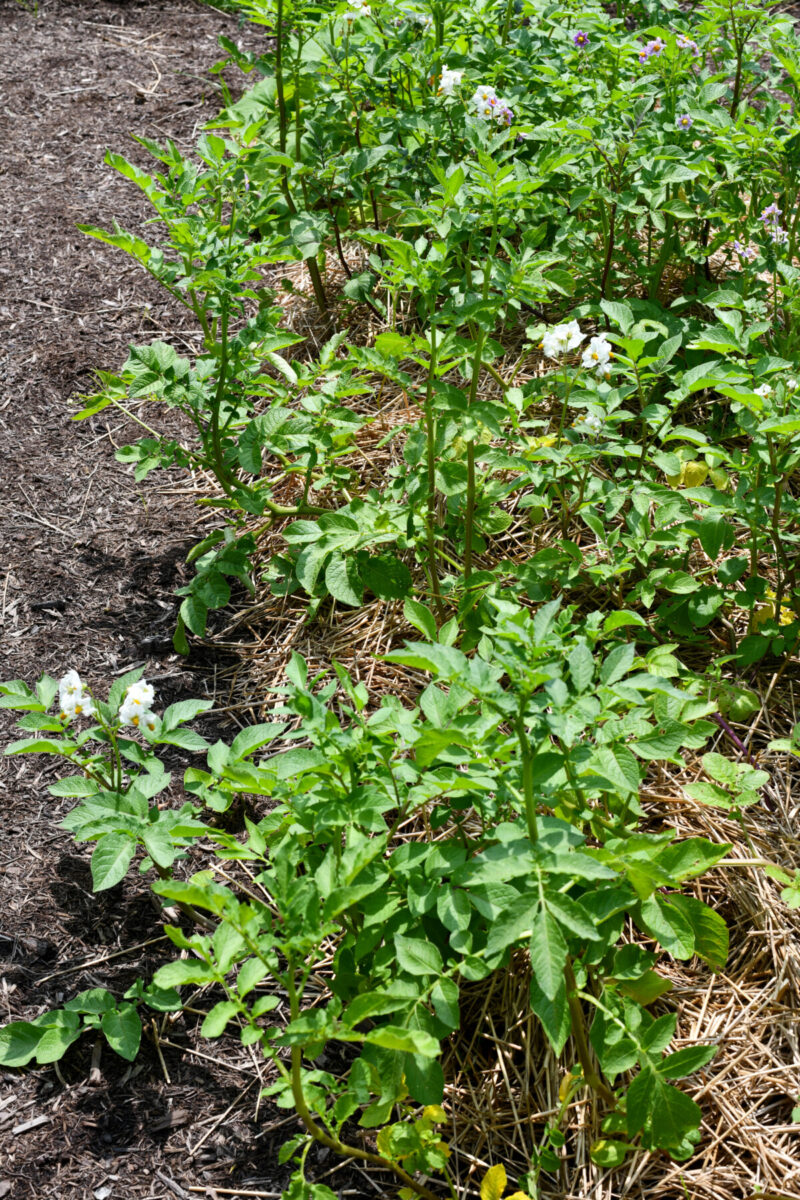
You may have a beautiful fall, where the weather stays warm and pleasant, and you can eke out the most growth from your spuds before they die back on their own.
But if you see a period of cold and wet weather is headed your way on the extended forecast, you’re not left to the mercy of the elements. Simply prune the plants back well before the cold snap and start the skin-toughening process. You and your potatoes will have more wiggle room before it’s time to dig them up.

Get the famous Rural Sprout newsletter delivered to your inbox.
Join the 50,000+ gardeners who get timely gardening tutorials, tips and tasks delivered direct to their inbox.

